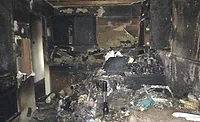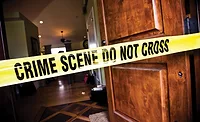The End of Life: The Importance of Methodical Biohazard Work
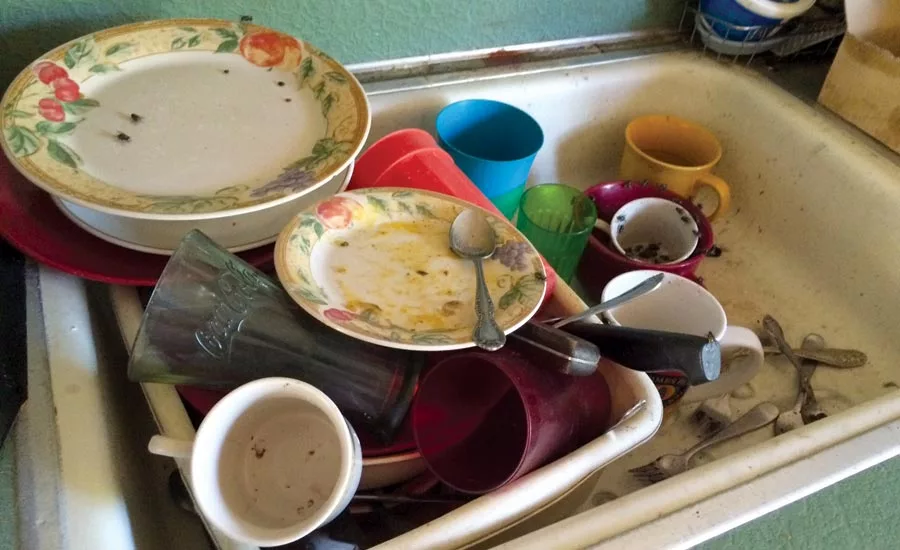
Photos courtesy of All Cleaned Up
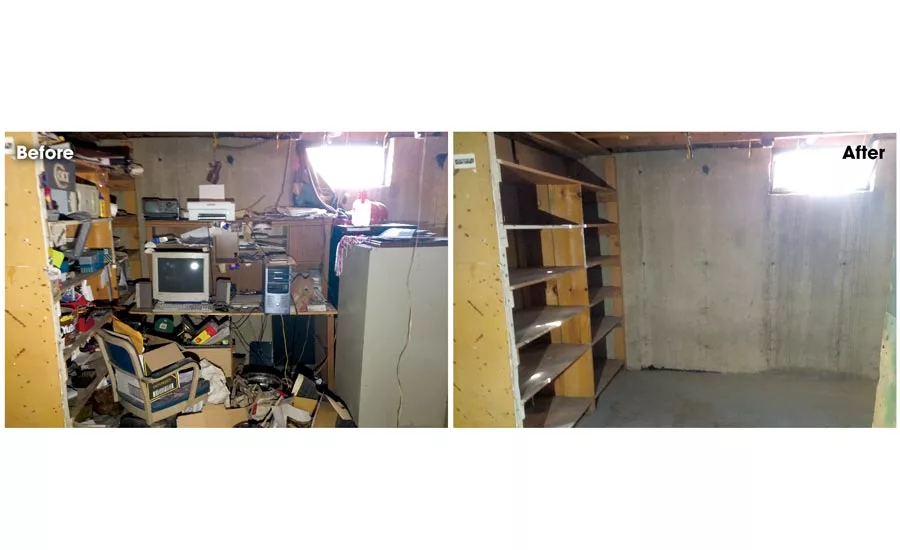
A look at the basement of the home before and after cleanup. Photos courtesy of All Cleaned Up
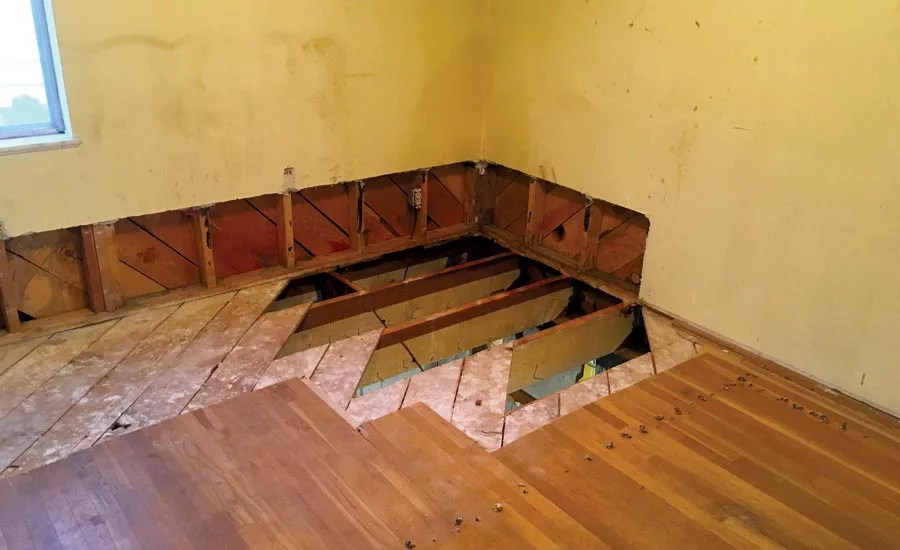
This was the result of the decontamination and load reduction work in the bedroom where the man had passed away against the wall. Photos courtesy of All Cleaned Up
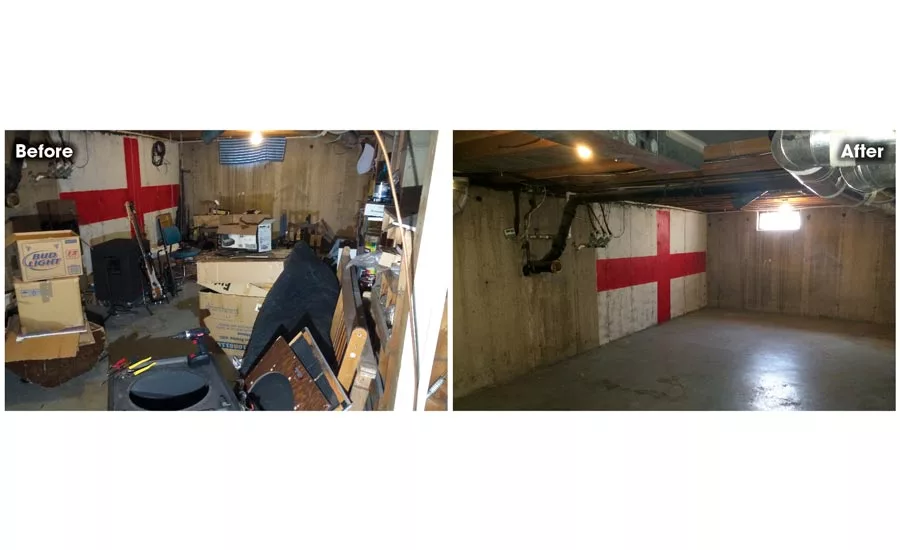
Another view of the basement before and after the remediation process. Photos courtesy of All Cleaned Up
No two mold jobs are alike. No two fire jobs are alike. No two water jobs are alike. No two forensic, biohazard, or hoarding cleanup jobs are alike.
Before shows like A&E’s “Hoarders” and TLC’s “Hoarding: Buried Alive”, hoarding was a relatively unknown mental illness. Reality TV shows the worst-of-the-worst of all hoards with garbage up to the ceiling, unsanitary conditions, and homes about ready to crumble beneath the weight of the contents inside. The hoards have been growing for decades.
How accurate are these shows? Many of you will likely agree watching a one hour TV show documenting a crew’s attempt to clean out a severe hoard is not an accurate depiction of what truly goes into jobs such as these. Hoards come in all shapes and sizes, involving many different types of items from rare books and antiques, to trash. Most hoards do not involve squalid, unsanitary conditions, but maybe do include some kind of biohazard cleanup. You could find a hoard in a basement, but a completely normal main floor. Likewise, not all hoards have been there or been growing for years.
Aaron and Jen Williams have seen a lot of things since starting their business, All Cleaned Up, in Reno, Nev., in 2012. They initially started as a property maintenance company, but have since worked their way into being skilled, highly - trained biohazard remediators. About 80 percent of the jobs they handle every year involve body decomposition.
Last year, the pair handled a job that combined an unattended death with hoarding.
The Decontamination Process
“The man had passed away in his home unattended, and he had given up on his life. He had not been throwing things away, and there was just a lot of stuff in there. It wasn’t collecting, it was trash,” Jen explained as she laid the groundwork for the job.
The man’s body was in the home nine days before he was discovered. Jen recalls it was pretty warm in the home without A/C, as temperatures ranged from 70 to 80 degrees daily outside. The body had decomposed so badly that some of the body fluids had gone through the floor and down the basement walls. This meant there was a lot of biohazard work to be done before even thinking about cleaning up the rest of the home.
This is the basic process the Williams’ followed in this instance, and an overview of their normal work flow which is largely based off of the RIA’s Forensic Restoration Guidelines:
- Do a complete site assessment (of course in full PPE) to be sure they can effectively do the cleanup.
- Set up all the control, transition, and operation zones.
- Do load reduction in the bedroom:
- Remove all the biohazard-contaminated items (clothes, carpet, bed sheets, etc)
- If necessary, cut out contaminated subfloor.
- Clean and disinfect the walls.
- Do load reduction in the basement:
- Clean and disinfect the foundation and walls in the basement. They use a product that will actually pull fluids like this out of the concrete.
- Apply a sealer.
- Start cleaning up the rest of the house.
- Utilize an ATP meter or serum indicator to provide documented proof of effective decontamination.
It’s important to note the necessity of full and proper PPE for jobs like this. The Williams’ served on the subcommittee which crafted the RIA Forensic Guidelines and they don’t take any chances. This means full face respirators, blood borne pathogen suits, several layers of gloves, shoe covers, taped-on gloves, and so on. This was necessary for every step of this job.
The Hoarding Cleanup Process
“The house was dirty. There were moldy dishes and decomposing food on the counter,” Jen recalled. “There was a lot of drug paraphernalia, plus marijuana, cigarette butts, and alcohol bottles. The man was also an avid bullet-maker. We easily found three 50-gallon drums of bullets. It was amazing.”
On top of the filth, Jen and Aaron discovered the basement had previously flooded while being full of items that were now growing mold.
The cleanup and mold remediation were somewhat straight forward, but removing contents from the basement proved very difficult because items were packed in so tightly and there was only a narrow stairway leading in and out of the space.
“We had to be pretty creative with the basement. There were no windows and we obviously couldn’t damage the home, and we also had to tread lightly to be respectful to the family,” Jen said.
Just like many other jobs they handle, the medical examiner had recommended All Cleaned Up to the victim’s daughter who had been tasked with getting the home cleaned up and ready to sell. In this case, the daughter wanted to be part of the process meaning doing walkthroughs and seeing everything in the home. During the actual cleanup, she mainly stayed outside but did want to sort through items and do inventory. She was required to wear some PPE, and did allow the crew to bring all the items of value to one spot and spray them down with disinfectant before she began her sorting.
Growth Comes Through Trust
When it comes to getting biohazard work, having a team that can handle this type of work is critical. All Cleaned Up has a team of five who are all part time and on-call. They are almost all first responders, who are looking for some extra work.
Aaron and Jen have worked hard to build trust among their team, and within their community. They believe in communicating with each other and the clients. As they’ve built a reputation for themselves as skilled remediators in the Reno area, they’ve gotten a lot of referral business from sources like the medical examiner and first responders. The growth hasn’t happened by boisterously bragging about the work they do.
“Don’t try to go too big too fast,” Jen wisely said when asked about her advice to others thinking about getting into biohazard work. “This is a slow, methodical process. That will be the difference between you and the other guys.”
Looking for a reprint of this article?
From high-res PDFs to custom plaques, order your copy today!




